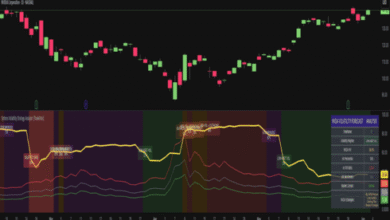
Options contracts convey to the buyer the right, but not the obligation, to trade in an underlying asset at a predetermined price before a specified expiry date; this underlying asset could be, for instance, stocks. The contracts are commonly described as derivatives since their price is obtained from the price of the stock on which they are based.
Two main features of an option include:
Strike Price: The price at which the underlying asset can be bought or sold
Expiry Date: The time of conclusion for the option contract.
Mostly utilized to hedge, speculate, or generate income through strategies that align with the objectives and risk appetite of the trader.
Necessary Demat Account in Options Trading
The setup in India is such that options trading demands that the trader obtain a Demat account, which works in conjunction with the trading account for buying and selling of options. The Demat account stores underlying securities in the custody of the trader. Usually options do not involve physical delivery of stocks.
However, the holder is allowed to settle the trade on a delivery basis if he/she does so from a Demat account. Therefore, in an options trading setup, the basic requirement is to open a Demat account with a prescribed depository participant by filling the KYC form and linking the Demat account with a trading account that permits trading in derivatives.
Call Options-Right to Buy
A call option gives an option to the buyer, without any obligation, to buy the underlying asset at the specified exercise price before the expiry.
For example, you have bought a call option for a stock at an exercise price of ₹500, having an expiry after 1 month. The market price of the stock rises to ₹550 before expiry; you can exercise the option at ₹500 and earn from the price difference.
In another case, if the stock price stays below ₹500, you may choose not to exercise that option and let it simply expire, thus limiting your loss to the premium you had already paid toward that option.
So, call options are generally used, expecting the price of the underlying asset to rise.
Put Options-Right to Sell
A put option gives its buyer the right, but not the obligation, to sell the underlying asset at the strike price on or before the expiry date.
For instance, suppose you buy a put option in a stock with a strike price of $500 with one month to expiration. If the market price drops to $450, you still sell the stock at $500 and get a gain from the price difference!
If the stock price stays above $500, you will let the option expire, losing only your premium. Put options are taken when you hold a bearish view on the price movement of the underlying.
Premium price of an option
On the purchase of an option, the buyer pays a price known as the premium to the seller (the writer). The premium will increase or decrease with the demand and supply of the market, depending partly on the stock price, the exercise price, the time to expiration, and volatility.
The premium becomes the maximum loss for the buyer if the option expires worthless, whereas every penny of premium becomes the maximum profit for the seller, who assumes the risk inherent in the position taken.
Investing in Options
Hedging: Investors can buy options to hedge against falling prices of stock they hold, such as buying a put option.
Speculation: This allows the buying of options to gain profit from one’s forecast of price movement without owning the underlying stock.
Generating income: Selling of options grants income in premiums; however, this is a very risky proposition and should only be undertaken by sophisticated investors.
Risks Associated With Options Trading
Options give flexibility to investors; however, outside returns, they have a great deal of risk.
Time Decay: The time value of an option diminishes with time.
Market Volatility: If there are sudden price changes, then it may influence the premium as well as the market value of the underlying asset.
Leverage Risk: Options provide great leverage-you control a larger portfolio with a small outlay-but it can go badly against you if trade moves against you.
Trading in options carries a warning: professional handling of risk management, an understanding of the material, and a probable position are paramount for successful trading.
Steps to Start Options Trading
Select any DP, complete the KYC form, and link it with your trading account for derivatives.
Enable the Derivatives Segment
That has to be activated. Submit the proof of income if required.
Learn the Basics
Have a sound grip on the terms like Call, Put, Strike Price, Premium, Expiry, etc.
Start Small
Risk management of experimentation in a tiny amount of contracts.
Monitor and Review
Be alert to changing market conditions and adjust accordingly.
2025-What Expectations for Options Trading?
Options trading is expected to remain an essential part of the fabric of the Indian stock market in the year 2025. In today’s scenario, online platforms and mobile applications enable traders to place orders, follow market movements in real-time, and manage their positions. Also, learning resources prepare beginners about calling and putting before they invest a large amount of capital.
So, the option trading will go on to form an integrated part of the overall trading decisions, alongside appropriate tools for risk management: A legitimate trading account with a connected Demat account.
Conclusion
Studying calls and puts is the first step towards utilizing options trading successfully. However, the highly flexible strategy applicable to hedging, speculation, and income generation does require awareness, discipline, and control over risk.




